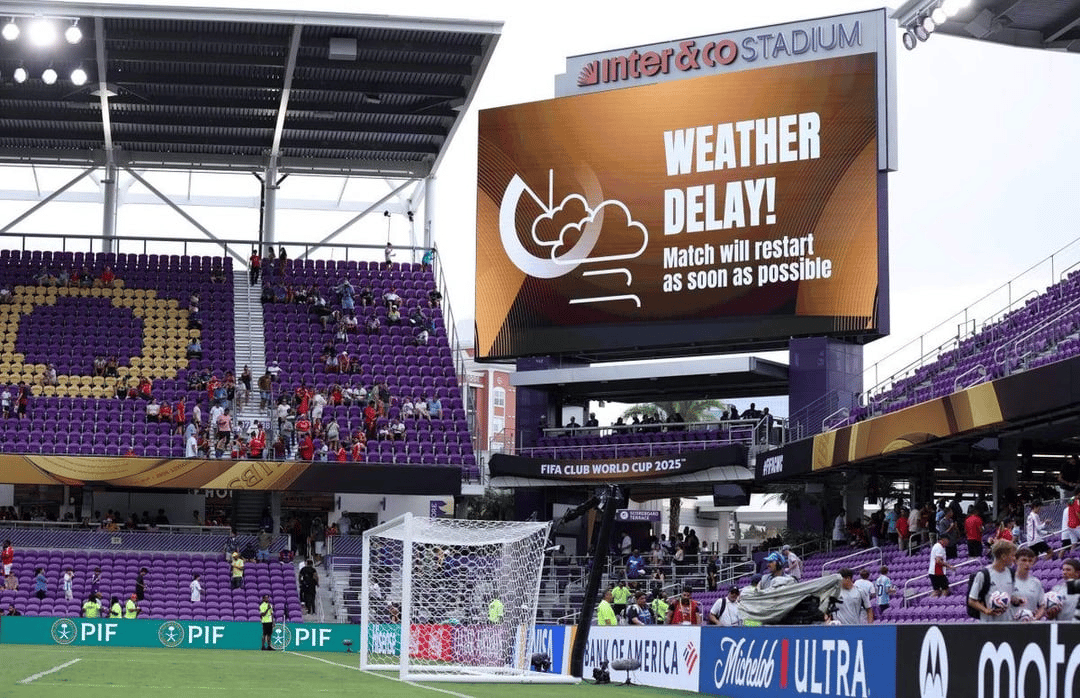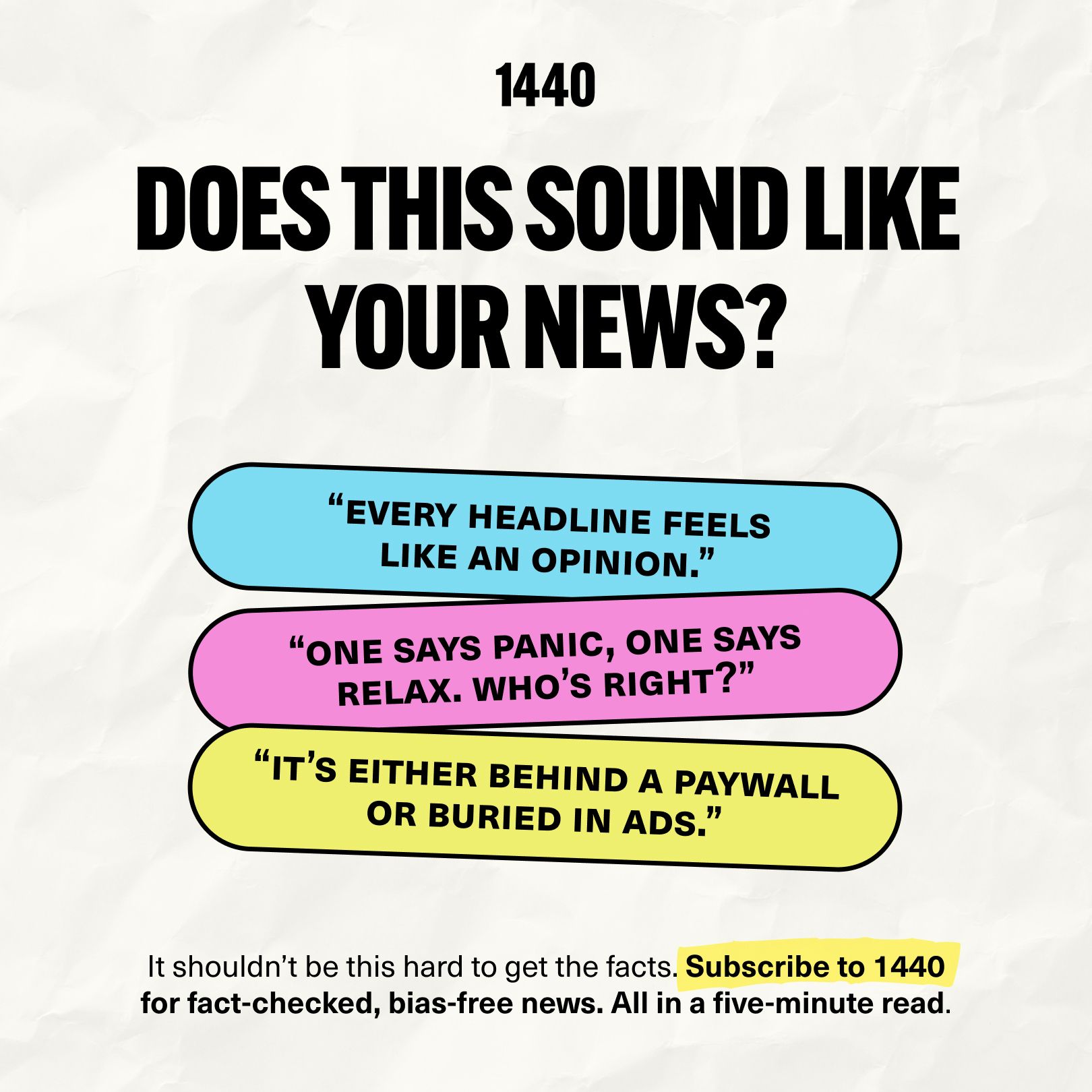Welcome back to The High Ground—your football newsletter that’s as inviting as an open goal... unless there’s a lightning delay, a 19-minute half-time, or 36 °C (97 °F) on the pitch.
Today’s exclusive? We’re digging into the Club World Cup weather mess: late kick-offs, absurd half‑time breaks, sweltering heat—and what it all means as FIFA gears up for in North America in 2026.

How Late Did Games Really Start?

Turns out, the Club World Cup average delay to kick-off was roughly 1 minute 26 seconds—hardly scandalous alone. But when 32-team hysteria meets American scheduling, that delay becomes a symptom of something larger:
Half-time breaks stretched to a whopping 19m 35s on average—around 4.5 minutes longer than top European leagues.
Some matches dragged on for over 2 hours and 6 minutes, far exceeding the typical 95-minute football time slot.
MLS meanwhile, clocked in with average starts 10m 41s late—a whole different time culture.
Weather Delays & Lightning Pauses
The “30‑30 rule” (30-minute pause + reset after lightning) was invoked six times, totaling over 8½ hours of downtime across the tournament.
Notable flashpoints:
Chung‑rock: the Chelsea–Benfica tie was halted at 85', resuming nearly 2 hours later—the full match clocked just under 5 hours tota.
The Benfica–Auckland City matchup stopped mid‑half, resuming 2h 14m later.
Reuters flagged another pause during Pachuca–Salzburg, which resumed after an 1h 37m hold-up.
Heat & Humidity Warnings
Let’s not sugarcoat it: the U.S. brought the heat—literally.
In Cincinnati, matches hit 90 °F+ (32 °C), triggering cooling breaks per half.
Charlotte? Sweltering 36 °C (97 °F) combo heat and humidity had subs cooling off backstage.
FIFPRO—the players’ union—insist the Wet Bulb Globe Temperature (WBGT) exceeded safe thresholds (28–32°C), calling for postponements, not just water breaks.
Chelsea’s Enzo Maresca called hosting in the U.S. a “joke” after a 2‑hour delay due to storms, questioning both player welfare and tournament logistics.

Looking for unbiased, fact-based news? Join 1440 today.
Join over 4 million Americans who start their day with 1440 – your daily digest for unbiased, fact-centric news. From politics to sports, we cover it all by analyzing over 100 sources. Our concise, 5-minute read lands in your inbox each morning at no cost. Experience news without the noise; let 1440 help you make up your own mind. Sign up now and invite your friends and family to be part of the informed.

What It Means for World Cup 2026: A Climate Crisis for Football

A January 2025 study from Queen’s University Belfast showed that 14 of 16 World Cup host cities are expected to exceed the WBGT (Wet Bulb Globe Temperature) safety threshold of 28 °C in afternoon hours more than half the time—especially cities like Miami, Monterrey, Kansas City, Boston, New York, and Philadelphia.
In a hot year, this risk spikes further—potentially impacting 88 of the 104 matches due to dangerous heat conditions.
Club World Cup: A Warm-Up That Burned the Players
The 2025 Club World Cup exposed the heat issue in real time:
Matches in cities like Charlotte and Cincinnati topped 32 °C, with trials where players were dizzy, coaches complaining, and FIFPRO calling for postponements—not just cooling breaks.
Thunderstorms triggered multiple delays under FIFA’s "30/30 rule" (lightning suspensions of 30 minutes, reset on each new strike)—some games lasting over 4 hours, massively disrupting rhythm and logistics.
FIFA’s Adjustments: Plan B or Plan Freaking A?
Stadium choice matters. Only five of the 16 venues for 2026 have roofs or climate control; the others are fully exposed to direct midday sun.
FIFA President Infantino confirmed games in cities like Dallas, Houston, Atlanta and Vancouver—those with enclosed roofs—will be prioritized for daytime action. Those unsafe cities should likely host only evening or late matches.
Cooling protocols were expanded—mid-game breaks, shaded benches, more hydration and shade zones—but FIFPRO demands even more: earlier starts and stricter temperature thresholds (above 28 °C, not just 32 °C).
Performance & Safety Impacts
Studies from 2014 World Cup and Copa América show high WBGT (>28 °C) can decrease sprint distance by ~10%—directly affecting match intensity and performance output.
Physical hazards rise: heat exhaustion, hyperthermia, fainting spells—even match officials collapsing under strain, as seen at Copa América 2024 in Kansas City.
Schedule Overhaul: It’s Messy
The expanded 48-team format means 104 matches, likely requiring midday kickoffs to fit schedules and broadcaster demands—especially targeting European TV slots.
But afternoon games in cities like Miami or Monterrey would pose clear threats to player and fan welfare. A more climatologically sound approach: move most matches to evening kickoffs in high-risk cities.
Some experts are even floating early kick-offs—as early as 9 AM in extreme cases, though broadcasters would balk at lost primetime slots.
Innovation in Player Health
England’s squad, under manager Thomas Tuchel, trialed digital pills to monitor core body temperature in real-time during heat-stress training—a preview of biometric strategies teams may deploy in 2026.

High Ground Takeaway
World Cup 2026 is teetering at a climate-care crossroads:
FIFA must rethink kickoff schedules in heat-vulnerable cities, shift more games to covered stadiums, and honour FIFPRO’s stricter heat thresholds—not just for players, but fans and officials too.
Without these changes, the tournament risks being overshadowed by heat exhaustion headlines, logistical chaos from delays, and performance drop-offs across teams.
FIFA’s Club World Cup experiment was supposed to prove they could handle the heat. Instead, it proved they can’t keep pretending temperature isn’t a game-changer.




